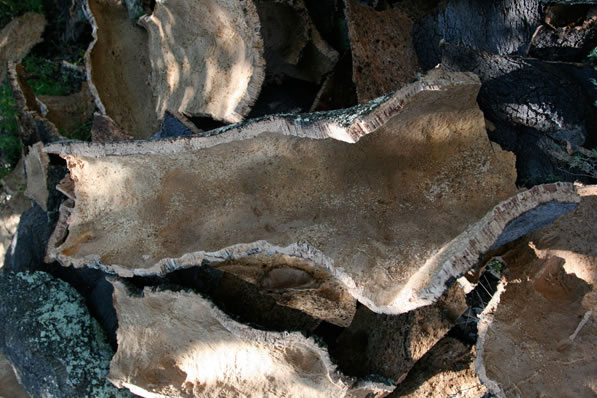I have been designing and making home products from Portuguese cork since 2004. As my practice evolves, I discover layer after layer of physical potential and environmental value. The cork granules, sheets, and blocks that I use in my furniture are made from the waste of wine-stopper production. It performs in ways no other natural material can, defying user expectations of object interaction. This is exciting of course, but equally so is the story of how this material comes to be.
This summer, I was invited for my second trip to Portugal by Cortiçeira Amorim—the world’s leading producer of cork products—to document the entire process of cork production, from harvest to reuse. I was familiar with the origin of the material as the bark of the cork oak (Quercus suber), harvested in nine-year cycles, but I had never seen the harvest first hand.
In Portuguese cork I found an industry with such a healthy structure that it serves as a model for how we could source natural materials in general. The cork industry reaps profit from a natural resource and improves the environment in doing so. Every year, 14 million tons of carbon is captured by the Earth’s cork oaks. Dozens of endangered species, such as the Iberian lynx and the Spanish imperial eagle, are given habitats to thrive. And the material itself is used in endless cycles of reuse, adding value at every turn.
Below, a photographic journey through the process:

Two harvesters, or descortiçadores, denuding a tree in 2 pieces. These men are highly skilled, and compensated for the craft they have inherited.

Two descortiçadores in a tree. You can see pieces falling to the ground.

A freshly harvested tree. The last digit of the harvest year is painted on the trunk to indicated when the next harvest can happen.

The staging area of freshly harvested cork.

Awaiting boiling, trimming, and sorting before bottle stoppers are punched out.

Making wine stoppers.

Cork flooring made from the waste material from wine stopper production.

Cork dust, unusable for upcycling, becomes biomass that powers the various cork production facilities and factories. Some factories are 90% powered by this biomass.

